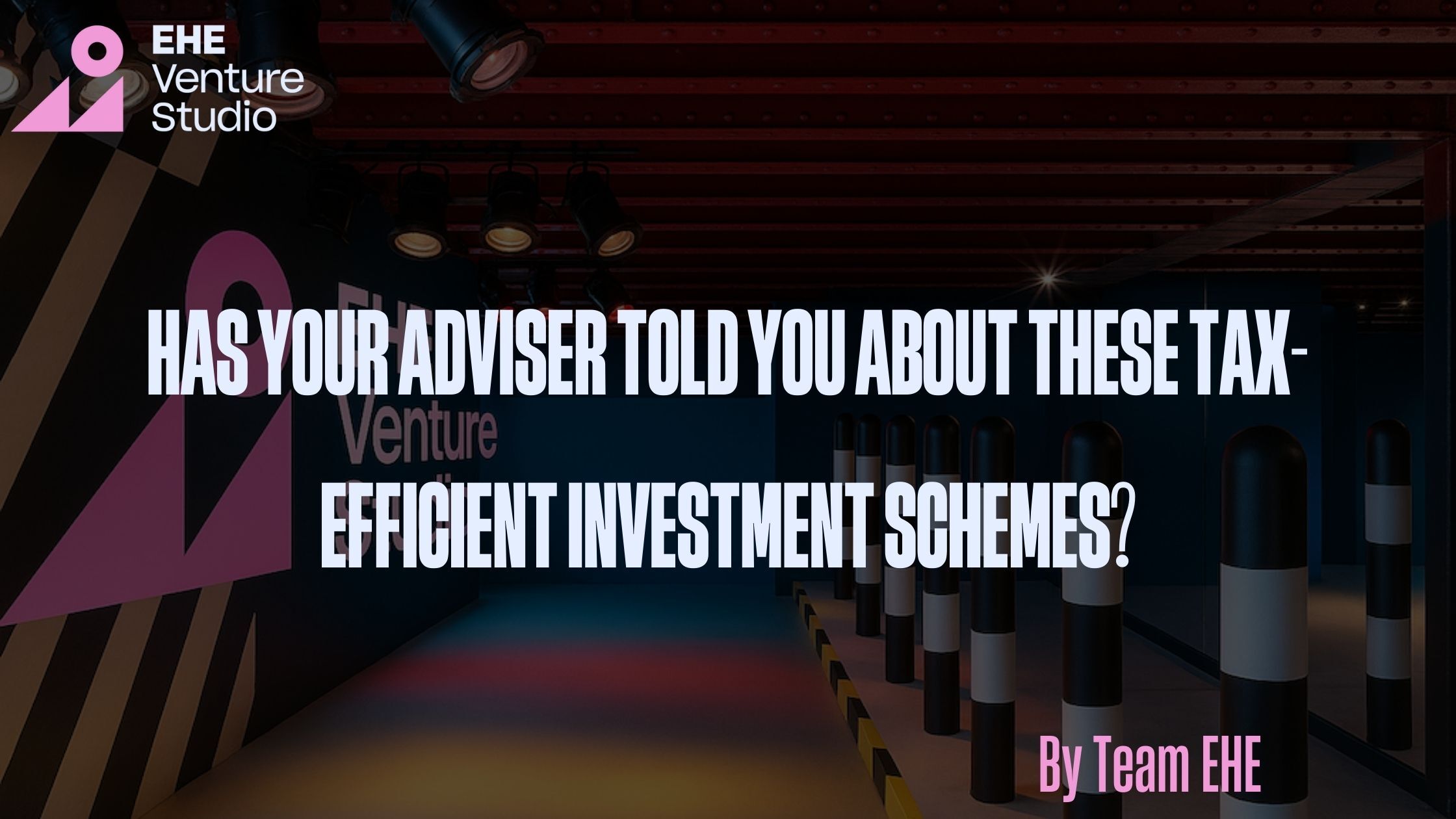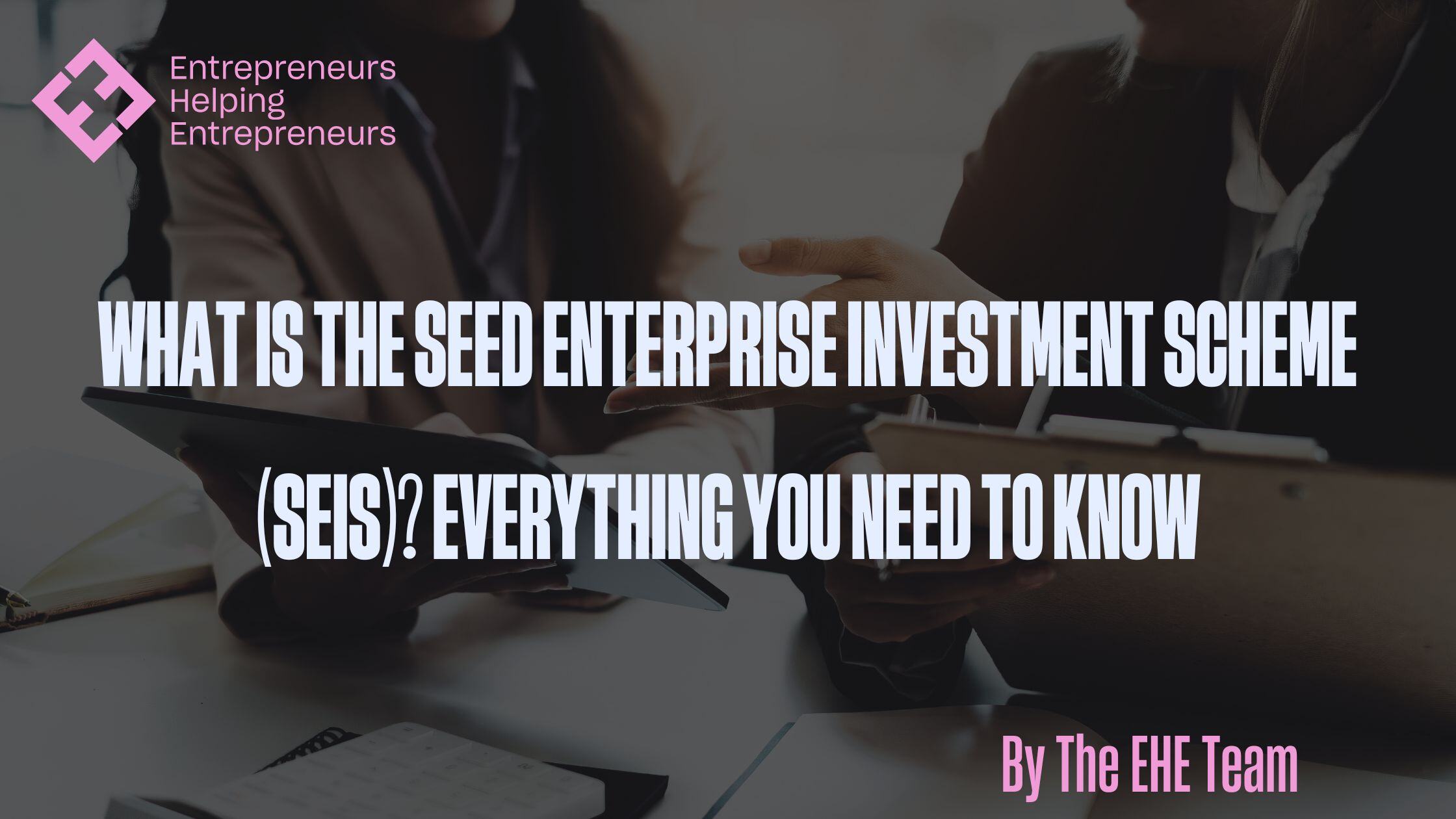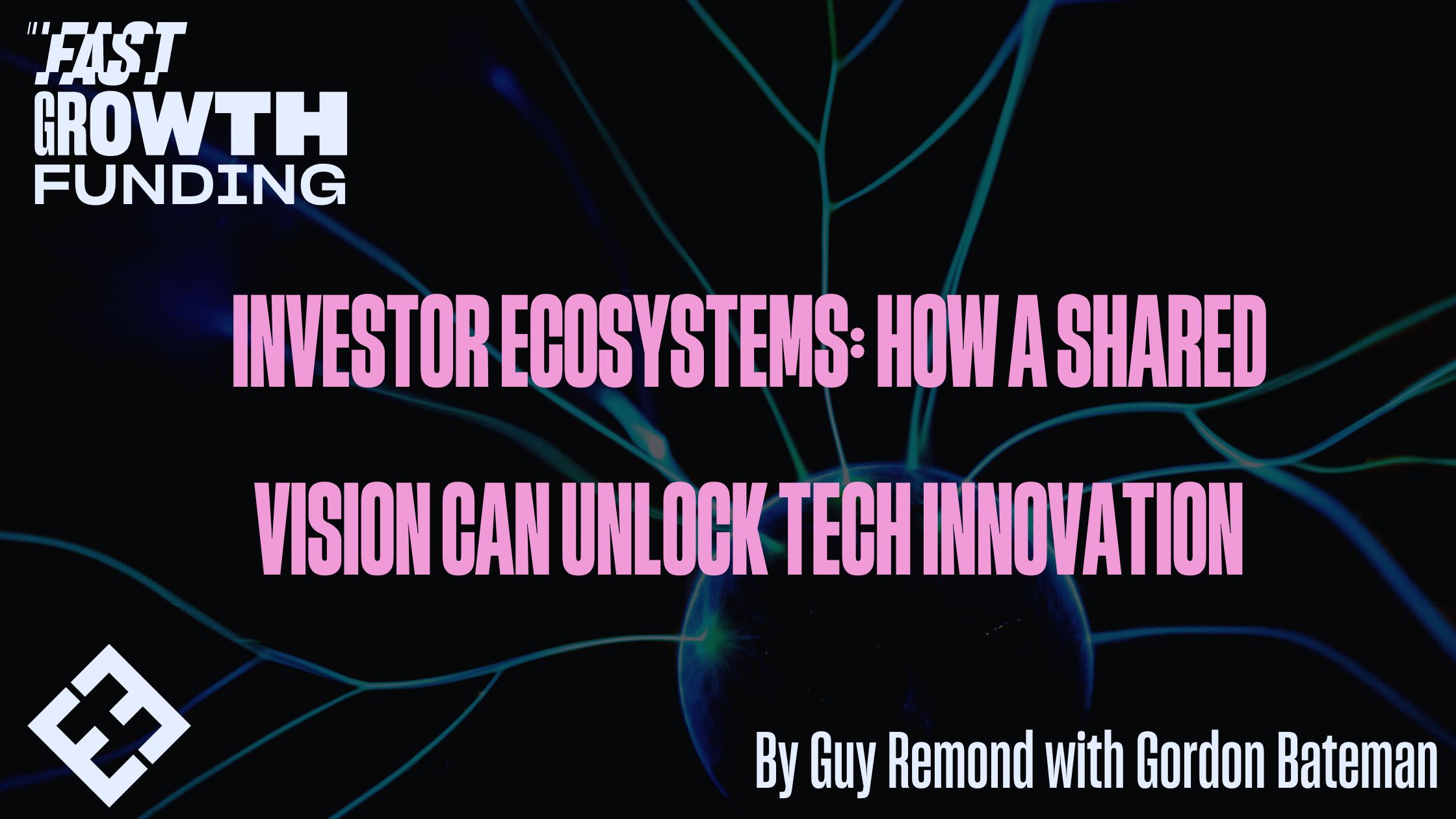SEIS Vs EIS Explained: What’s The Difference & Why Should Early Stage Businesses Want To Know?
The first thing any investor or founder says after hearing about SEIS or EIS for the first time is: ‘Great news!’
4 min read
Sogi Chukwuanu : May 7, 2025 10:16:25 AM

Could you be missing out on one of the UK’s most powerful investment schemes?
According to recent research, 90% of female angel investors weren’t made aware of SEIS or EIS by their financial adviser.
That’s a problem - because these government-backed schemes offer some of the most compelling tax incentives available to UK investors. SEIS provides 50% income tax relief, EIS offers 30%, and both come with benefits like capital gains tax exemptions and loss relief. Yet too many investors still don’t know they exist, or don’t realise how accessible they are.
In an episode of Fast Growth: The Venture Studio Way, we spoke with Christiana Stewart-Lockhart, Director General of the Enterprise Investment Scheme Association (EISA), to explore what these schemes are, how they work, and why more investors—and advisers—should be paying attention.
If these schemes are so beneficial, why aren’t they more widely known? And what should you be asking your adviser about them? That’s what we’ll cover in this blog.
The Seed Enterprise Investment Scheme (SEIS) and the Enterprise Investment Scheme (EIS) are two of the UK government’s flagship initiatives to encourage private investment into early-stage, high-growth companies.
They were created to make it more attractive - and less risky - for individuals to back startups. In return for investing in qualifying UK businesses, investors receive a range of generous tax reliefs, including income tax relief, capital gains tax exemptions, and loss relief if the business fails.
SEIS is aimed at very early-stage companies, and offers investors up to 50% income tax relief on investments up to £200,000 per tax year.
EIS supports slightly more established startups, offering 30% income tax relief on up to £1 million per year, or up to £2 million if invested in knowledge-intensive companies.
Both schemes are backed by HMRC and are designed to stimulate innovation, support entrepreneurship, and help grow the UK economy.
We’ve written a separate blog that breaks down the key differences between SEIS and EIS, the rules founders need to follow, and how investors can take full advantage of the reliefs. Read it here.
Given how generous these schemes are, you’d think they’d be front and centre in every adviser’s toolkit. But that’s not always the case.
As we heard from Christiana Stewart-Lockhart, Director General of the Enterprise Investment Scheme Association (EISA), awareness of SEIS and EIS is still surprisingly low, even among financial advisers and wealth managers. In fact, a recent survey of female angel investors revealed that 90% hadn’t been told about these schemes by their adviser.
There are a few reasons behind this.
Some advisers are cautious about recommending high-risk investments, even when the risks are mitigated by tax relief. Others may not be fully up to speed with the details of the schemes or how accessible they’ve become. There’s also the question of regulation; many advisers are understandably wary of overstepping into areas that could be seen as tax or investment advice, especially if they’re not specialists in early-stage investing.
This is where organisations like EISA come in. As the trade body for the SEIS and EIS ecosystem, their role is to educate. They work to raise awareness among investors, founders, intermediaries, and government. The more people understand how these schemes work, the more likely they are to be used.
So, if your adviser hasn’t mentioned them, that doesn’t mean they’re not suitable. It may just be time to ask the question yourself, because the potential benefits are significant. Let’s take a closer look at what’s on the table.
SEIS and EIS are designed to make early-stage investing more attractive by reducing risk and enhancing returns.
SEIS offers up to 50% income tax relief, while EIS provides 30%. There’s no capital gains tax on qualifying investments, loss relief if the company fails, and potential inheritance tax relief for longer-term holdings.
These benefits exist to support innovation by encouraging more private capital into early-stage businesses. For many investors, they also open the door to more efficient portfolio planning.
You can find a full breakdown of the tax benefits here: [Full guide to SEIS and EIS tax reliefs].
And while the incentives are generous, the barriers to entry aren’t as high as many people think…
One of the most common misconceptions about SEIS and EIS is that they’re only relevant to high-net-worth individuals investing six figures or more.
In reality, more than half of all EIS investors put in £10,000 or less. Thanks to the rise of SEIS/EIS funds and crowdfunding platforms, it’s now possible to get started with as little as £2,000 - or even lower in some cases.
These schemes have helped to democratise access to early-stage investing. They’ve opened the door for more investors to support innovative startups - without needing a family office or a private banker.
That shift matters, because some of the most exciting growth stories in the UK started with SEIS or EIS backing (think Revolut, Monzo, Gousto, Curve, Deliveroo, Just Eat, Bloom & Wild). But despite that progress, far too many investors still don’t know these schemes exist. And the problem often starts with the people they trust most: their financial advisers.
As we've seen, many advisers are cautious around early-stage investments. Others simply aren't aware of the full range of tax reliefs or how accessible these schemes have become. Either way, it’s worth raising the topic yourself.
Here are a few questions to start the conversation:
You can also explore the EISA investor directory, which lists funds and platforms that specialise in SEIS and EIS. It’s a useful place to start if your adviser isn’t yet familiar with the space.
SEIS and EIS aren’t new, but for many investors, they’re still unexplored territory. That’s starting to change.
The recent shift in capital gains tax rules, along with a broader push for more tax-efficient investing*, means more people are beginning to look beyond the usual routes. For those willing to explore early-stage opportunities, these schemes can offer a smart, structured way in.
At EHE Ventures, we’ve launched a dedicated SEIS and EIS fund focused on AI-driven startups, pairing the tax advantages of the schemes with the hands-on support of a venture studio model. We’re also now proud members of the Enterprise Investment Scheme Association (EISA), joining the effort to raise awareness and support innovation across the UK.
If you’d like to learn more about our fund, or explore how SEIS and EIS could fit into your investment strategy, we’re always happy to chat.
*The tax benefits available under S/EIS schemes are dependent on individual circumstances and may change in the future

The first thing any investor or founder says after hearing about SEIS or EIS for the first time is: ‘Great news!’

The Seed Enterprise Investment Scheme (SEIS) is a government-backed initiative designed to support both startups and investors. It offers new...

By Guy Remond, with special guest Gordon Bateman